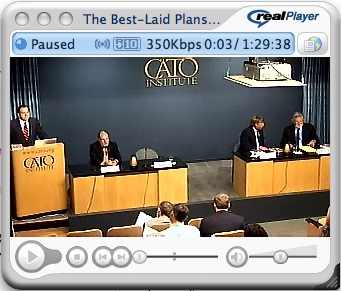Transportation policy should aim to reduce congestion, says Alan Pisarski, author of Commuting in America. Yet too often it is actually aimed at “making things get worse — slower!”
“We can’t make it faster but we can try for reliably slower,” Pisarski quotes one transportation planner as saying. “These should be embarrassing if not pathetic goals,” he commented at the Preserving the American Dream conference in San Jose last week.
“Imagine if such goals were applied to schools or hospitals.”
In much of the U.S., notes Pisarski, more than 25 percent of workers commute across county lines to get to work. Click chart to see a larger image.
Pisarski argued that the appropriate goal for transportation should be “to reduce the effects of distance as an inhibiting force in our society’s ability to realize its economic and social aspirations.” You can download his PowerPoint presentation (850KB); if you would like a copy of the DVD of his presentation, email the American Dream Coalition.










